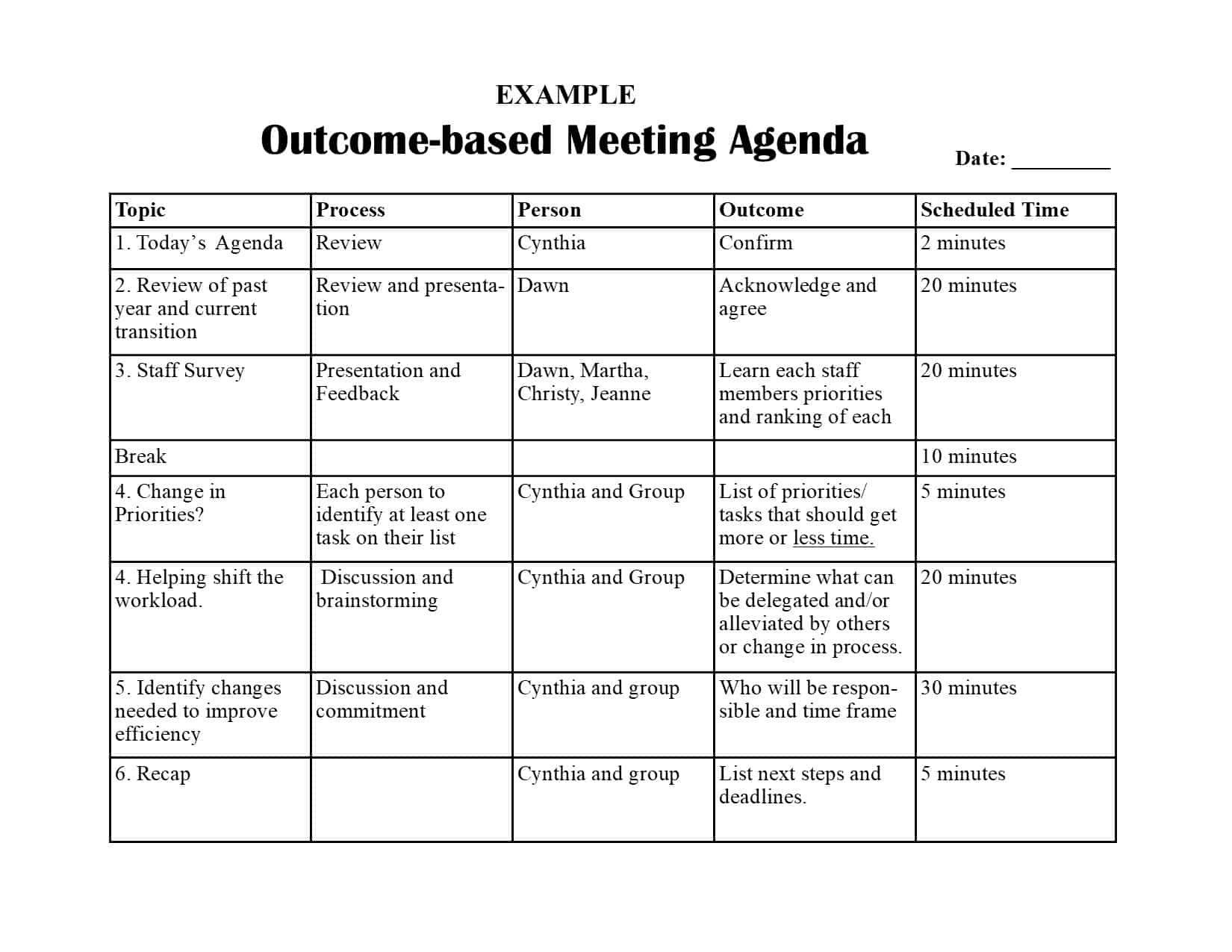Should we even have meetings? That was the question of a recent study that was trying to ascertain how employees could become more productive. The study’s findings suggested that if we just did away with meetings, there would be a lot more time in the day to make progress on important projects. This sounds startling and even like a great solution to never having enough time. However, what it doesn’t take into account is exactly how meetings are run, which leads them to being so ineffective.
Typically, there is a weekly or monthly team or department meeting. People gather together. There’s some fun, but irrelevant chatter. People are updated on things, or perhaps each person is reporting on some aspect of a project. When the meeting is over, everyone goes back to what they were doing. What did they get out of the meeting, or what did the meeting do to spur any sort of progress? In essence, what were the “outcomes” of the meeting?
And that is the problem. Most meetings are not structured to have any outcomes, and therefore they do little to help move the team forward. There is a lot of talking (usually by the same people) and discussion, and that is all—until the next meeting, when this scenario is repeated.
The solution is to have a strong leader/facilitator who puts a detailed agenda and expectations in place—well before the meeting. It’s called an “Outcome Based Agenda.” This allows meeting participants to be better prepared and more able to contribute to solutions and final decisions. The communication from the team leader needs to include the following:
- Purpose of meeting and list of attendees, including any guest speakers or observers.
- Detailed, outcome-based agenda. This is an agenda that looks like a grid. In this grid is the subject, the process (is it a presentation? a discussion?), who is involved in the process, the amount of time that will be spent on the subject, and the final outcome. See the attached example.
- What each participant needs to do in advance of the meeting. If certain people are making a presentation about something, they should be totally prepared. If hard data is important for the presentation, they need to know they are expected to present it.
During the meeting, someone (if not the leader) needs to keep track of the time. The idea is to get through every agenda item and its outcome. The time notations on the Outcome Based Agenda are to be followed as closely as possible. If it turns out that one topic is dominating the discussion, your leader or group will need to decide whether to table it and move on or table the rest of the agenda for the next meeting.
The goal is to make your meetings count. They should never by a waste of time. They should be productive and move the team and its projects forward to greater success levels. The Outcome Based Agenda takes a little more work up front, but it is more than worth the time it takes to create. And once you learn to use it, you’ll see it is the most valuable tool for any meeting.
Lastly, can you have fun and enjoy your meetings? Absolutely! If there is any time for a short ice breaker or team challenge, definitely include it. The bonds that form among team members help make discussions and flow of ideas a lot easier. So whatever you can do to increase camaraderie and getting to know one and other is a plus. There are plenty of activities that take 5 minutes or less.

